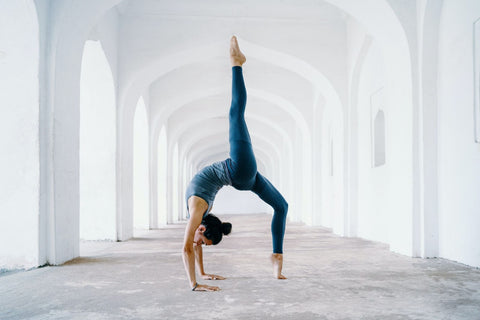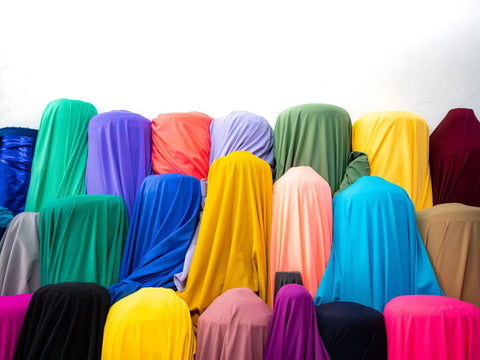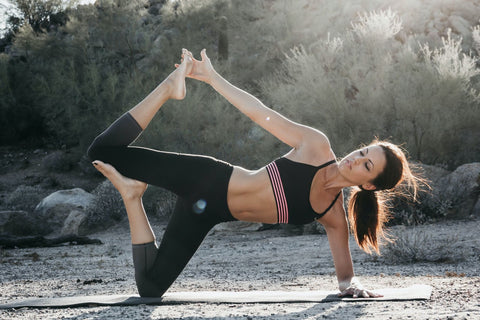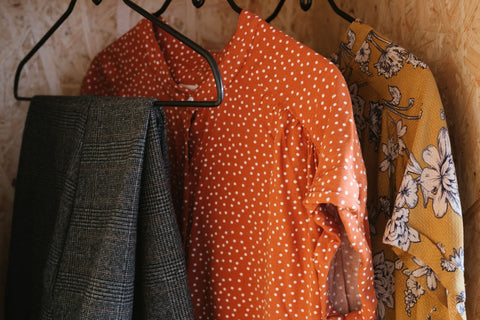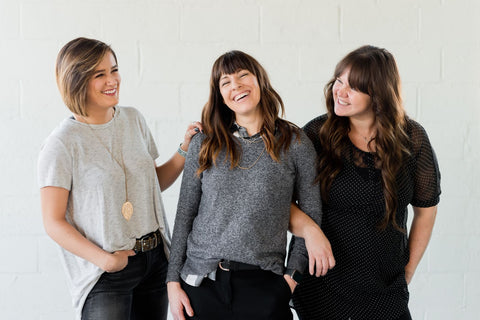
According to the National Institute of Mental Health, approximately 18 percent of the U.S. adult population have been diagnosed with an anxiety disorder, with women being 60 percent more at risk for developing an anxiety disorder in their lifetime.
Americans, for the most part, report high levels of anxiety in general. Work contributes to the anxiety of many Americans, with a survey reporting that 41 percent of workers feel extremely anxious at work. And almost half of North Americans take mood-altering medications to cope with anxiety.
Anxiety and stress can be hazardous for the body. Relaxation techniques are a natural way to calm the body and decrease anxiety. Yoga is a form of relaxation that helps the body relax and cope by providing a strong sense of calm and relaxation. Breath is an essential part of yoga practice, as the precise and measured breathing overtakes the objections of the stress-ridden mind to allow the body to contort and position into postures.

Breathing centers the mind and relaxes the body, which makes yoga an ideal way to relieve the body from everyday anxiety and pressures. Before beginning yoga practice, begin by practicing cleansing breaths—these breaths and breathing exercises are essential.
Breathe in through the nose and out through the mouth. Always inhale through the nose and exhale through the mouth. This mindful pattern of breathing is what the mind must focus on before practicing postures.
Meditate quietly while sitting in the Easy Pose position. This is similar to the Lotus Pose, but easier. In the Easy Pose, the body sits upright, back straight, shoulders back, legs are crossed with the arms to the side and the palms bent upward (or pressed in praying position). Keeping the back straight is important, as this provides balance and also focuses the core muscle group.
Yoga should be relaxing—not an additional stressor—so focus on the breathing until the body relaxes. While sitting in the Easy Pose position, you may also keep a word or a restful and relaxing picture in the back of the mind to help center the mind, body and soul.
Moving on to postures, the body should be introduced gradually to yoga positions. Beginners should try easy positions first, before moving onto anything difficult. Don’t push the body to attempt a position. The body should move freely, not forcefully.
Remember, when positioning the body that it is important to continue the deep cleansing breaths.
Beginners may try the following easy yoga positions to incorporate into a relaxing routine:
Tree Pose (Left/Right):
Stand upright with arms meeting in the center of the body with the hands pressed together as if praying. Gently cross one foot to the opposite thigh while balancing on the other leg. Keep the eyes closed and center the body by breathing allowing the energy to flow to the leg to keep the body in balance.
Upward Extended Feet Pose:
Lay on the mat with the back flat against the floor. Now lift both legs straight into the air so that the thighs make a right angle to the body. Keep the feet flat in the air. The body may remain in this position while continuing to breath.
Right/Left Bend:
Bend poses are simple, but also let the body move freely. Stand with the back straight with both arms bent at the side with hands resting at the waist. Now arch the back to the left side, with the right arm reaching over the head as you bend to the left.
The Corpse Pose
For a final rest and relaxation, lay in the Corpse Pose. As with all poses, keep taking deep centering breaths. Lay flat on the mat with the legs slightly apart and the arms outstretched. Keep the palms facing up. Close the eyes and quietly let relaxing thoughts enter the mind as you breathe.

Corpse Pose
Yoga provides a relaxing escape for the toxicity of everyday anxiety or to help aid in relaxation for those with an anxiety disorder. Take a half an hour in the evening to turn down the lights, center the breath and stretch the body for a daily dose of stress relief. Namaste.

